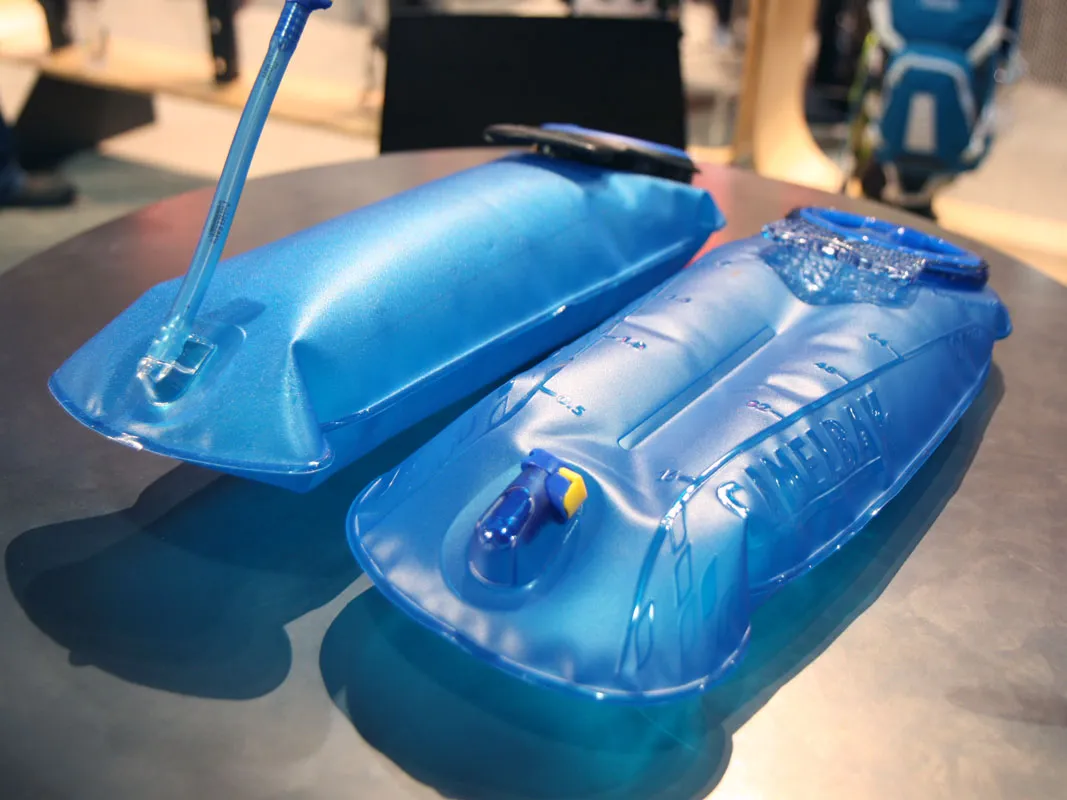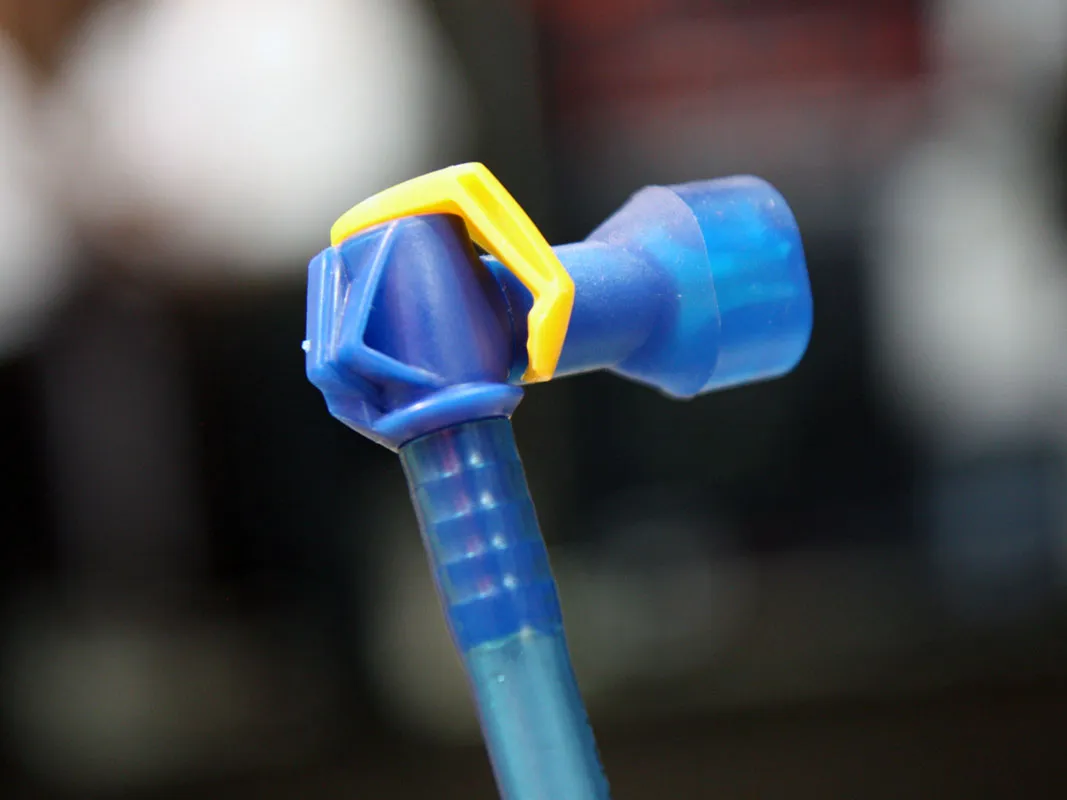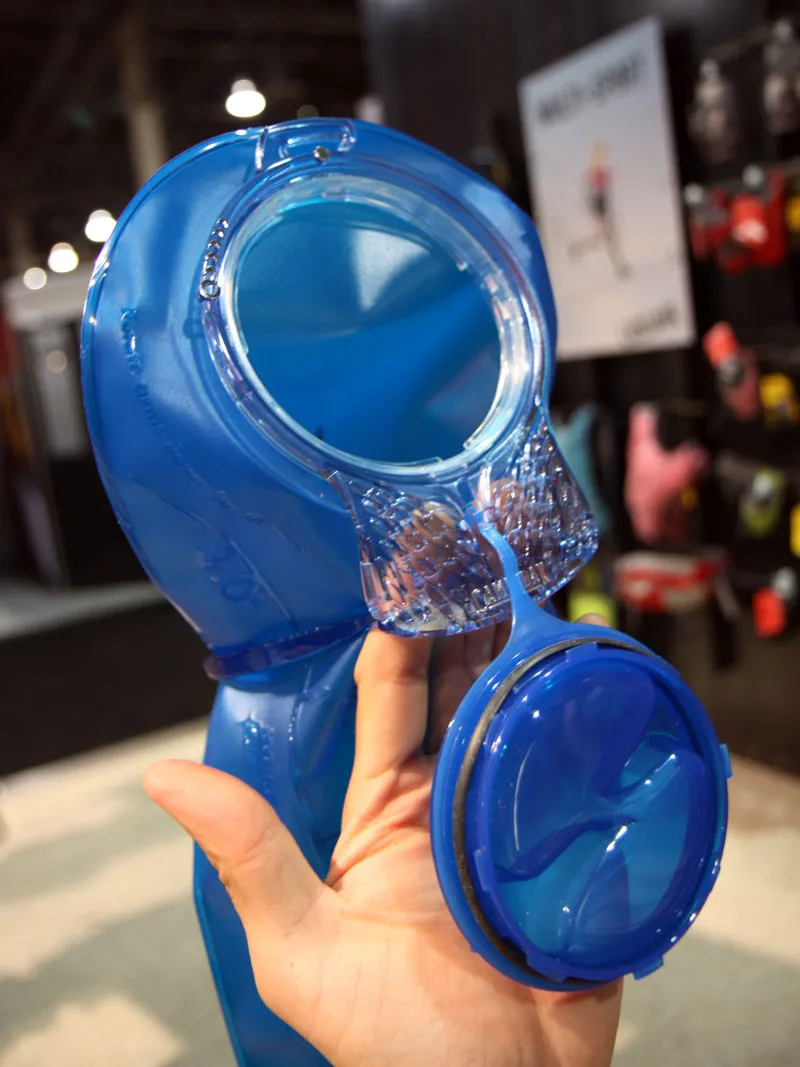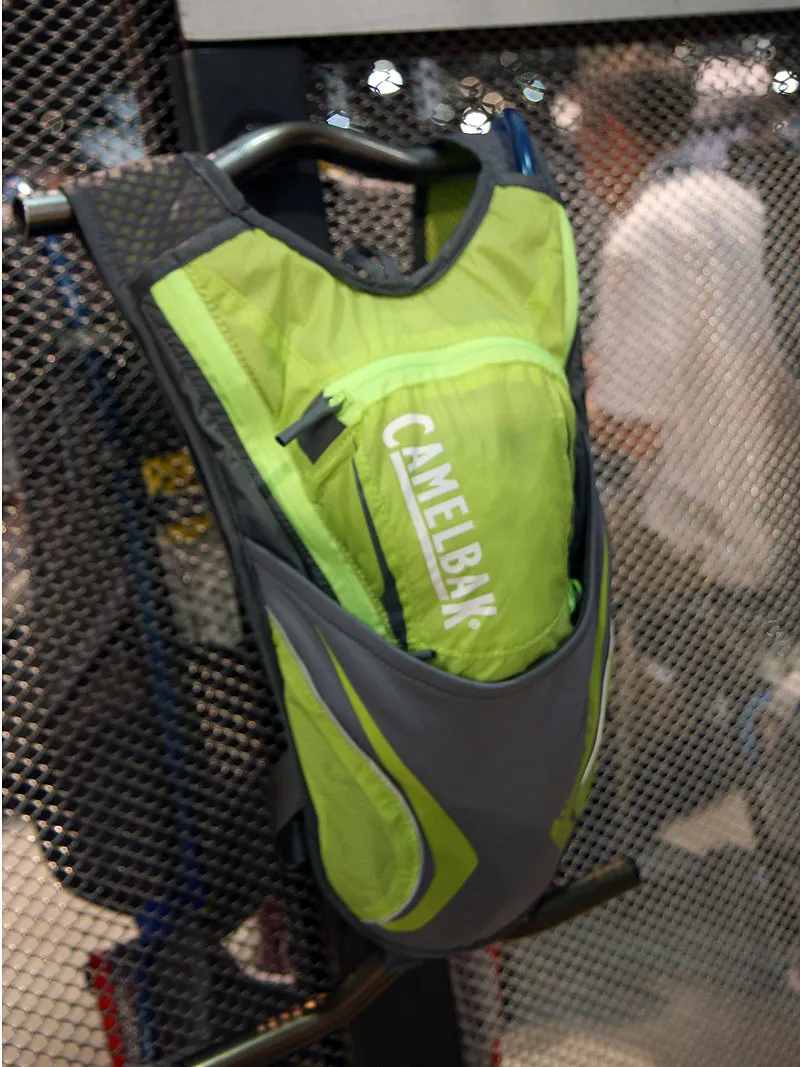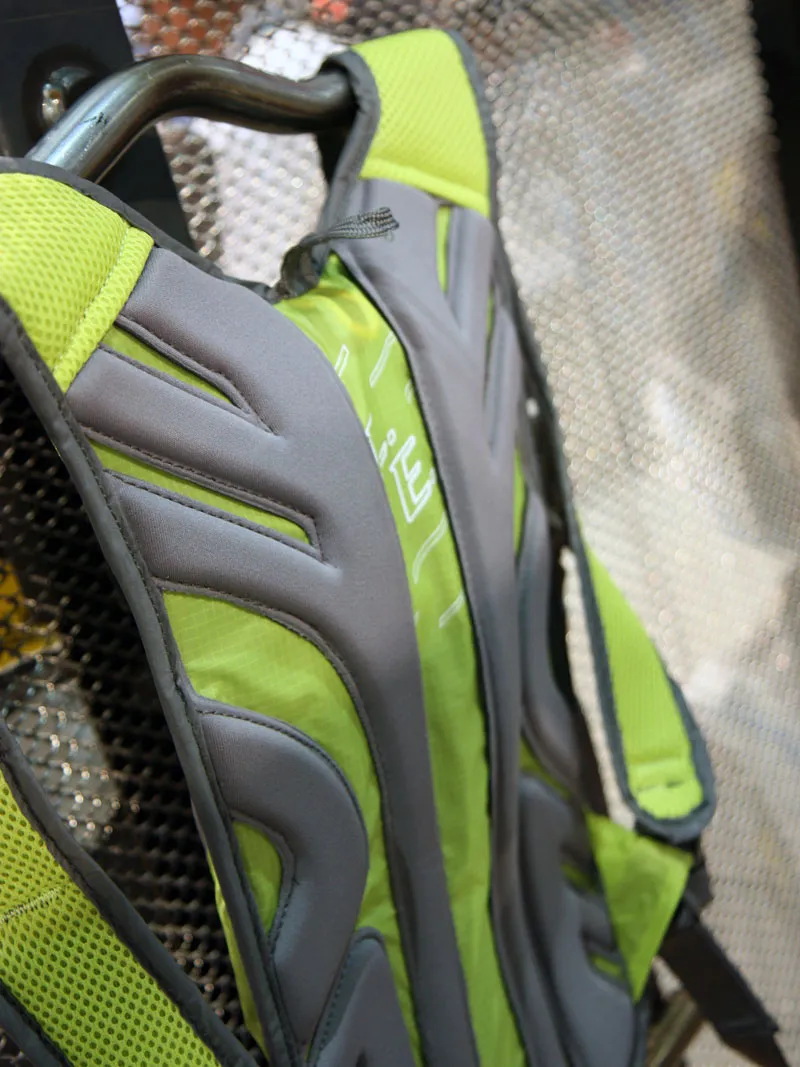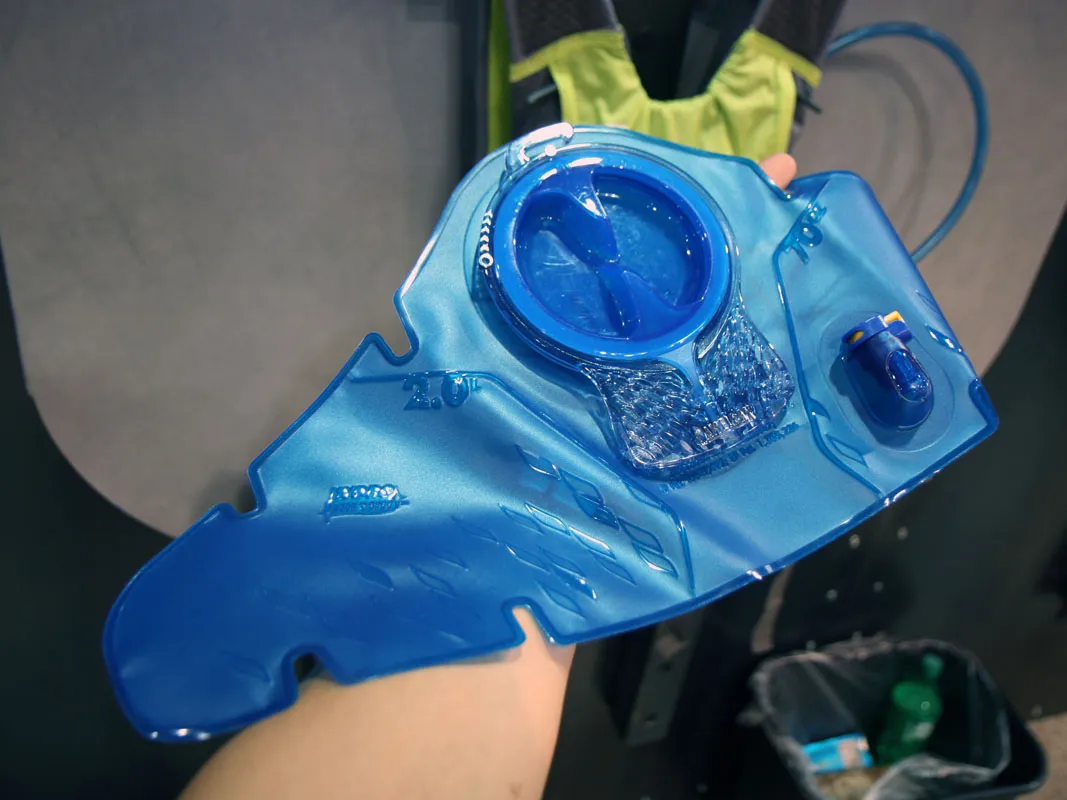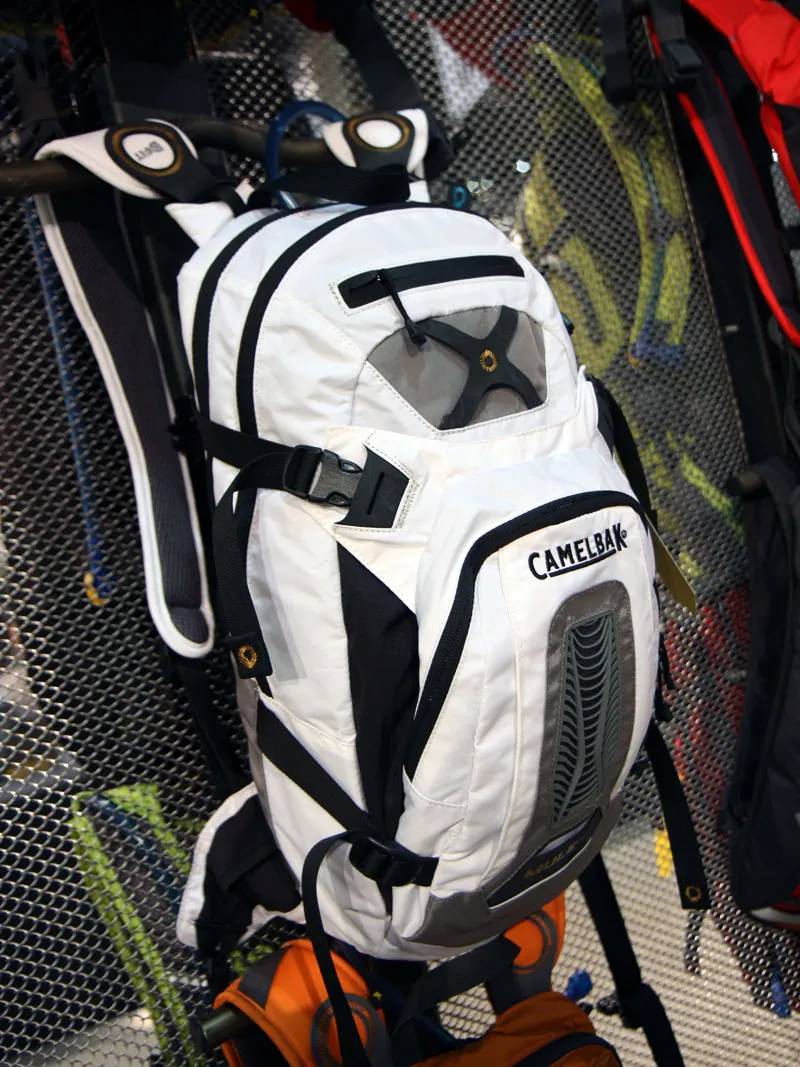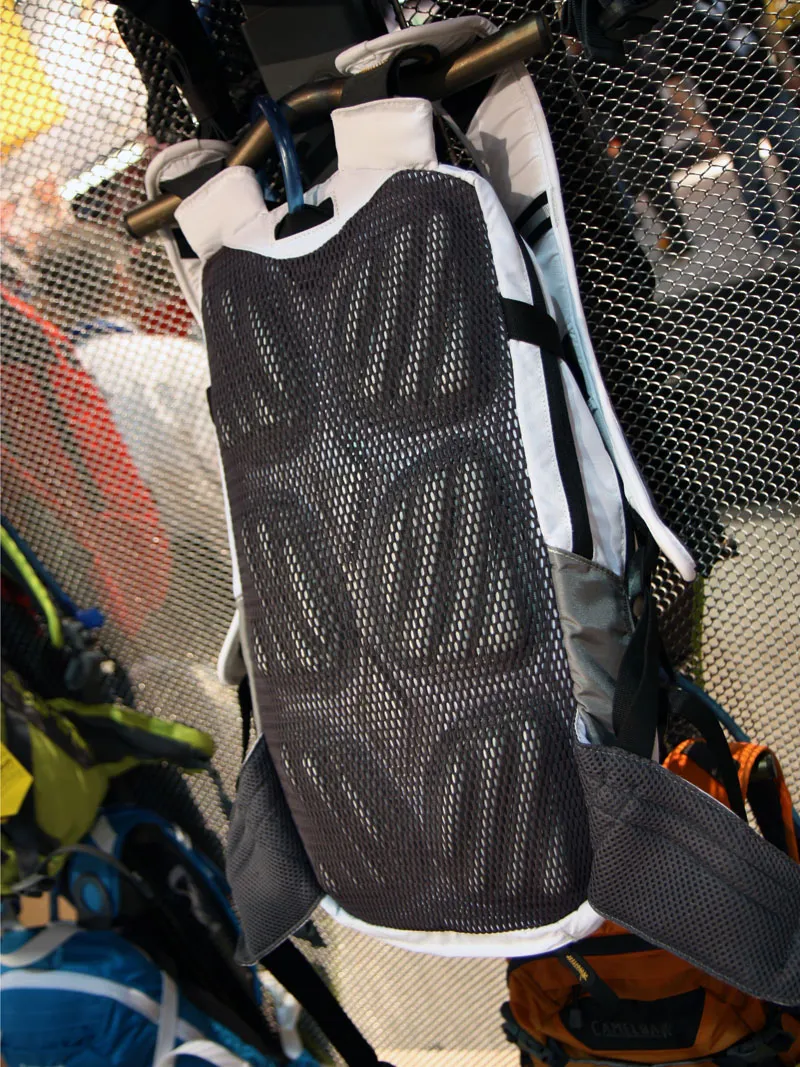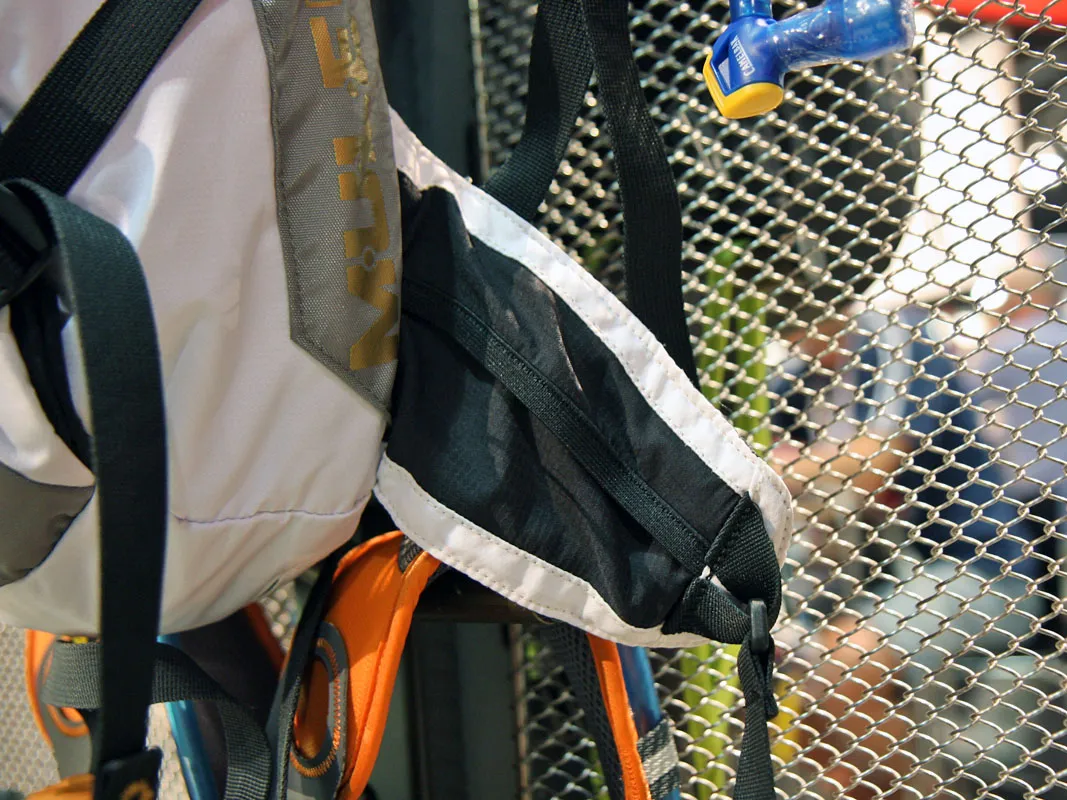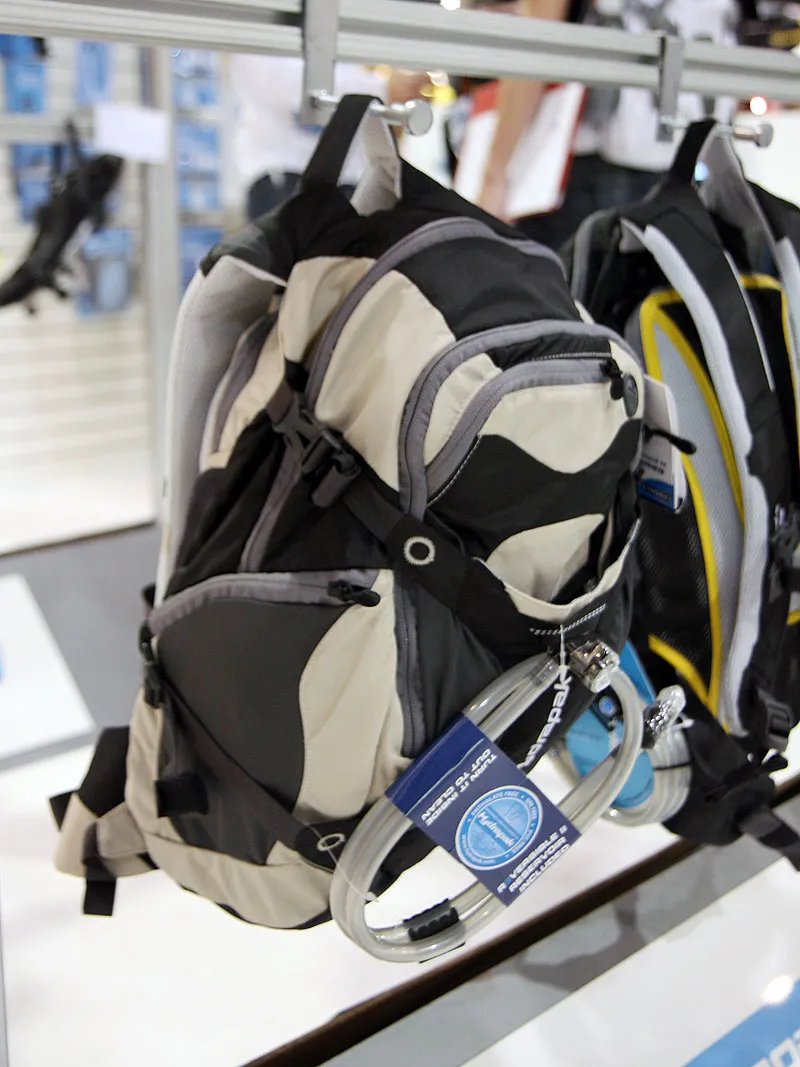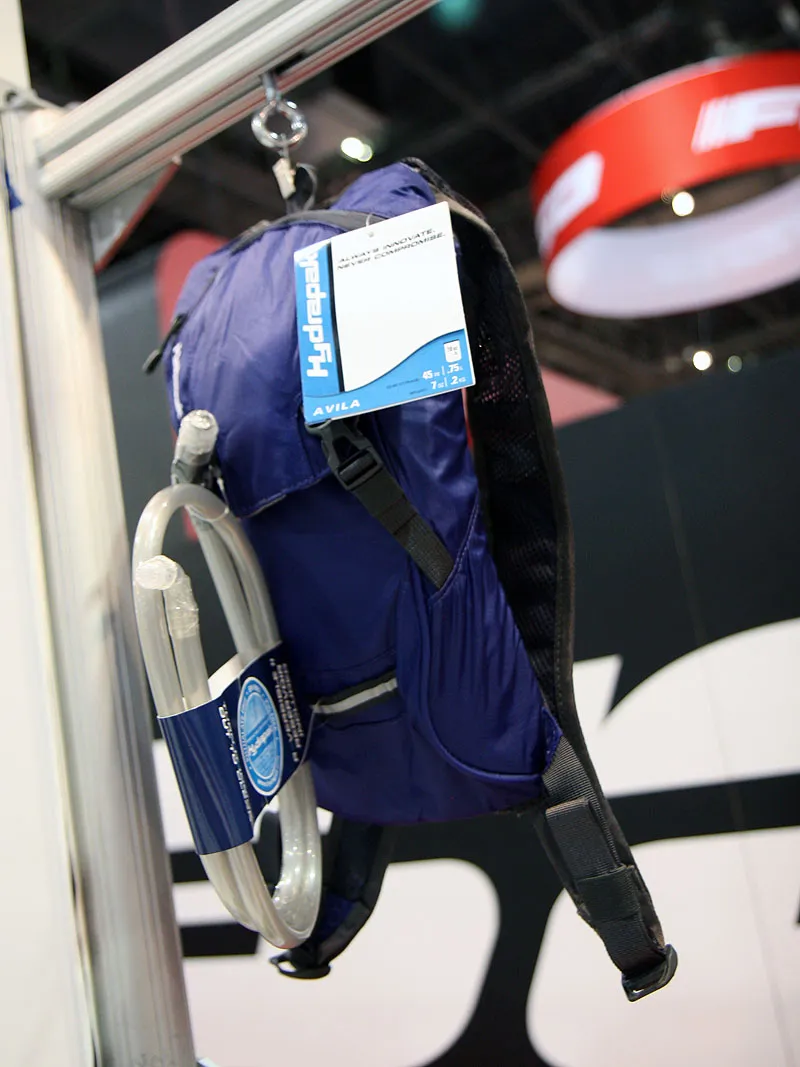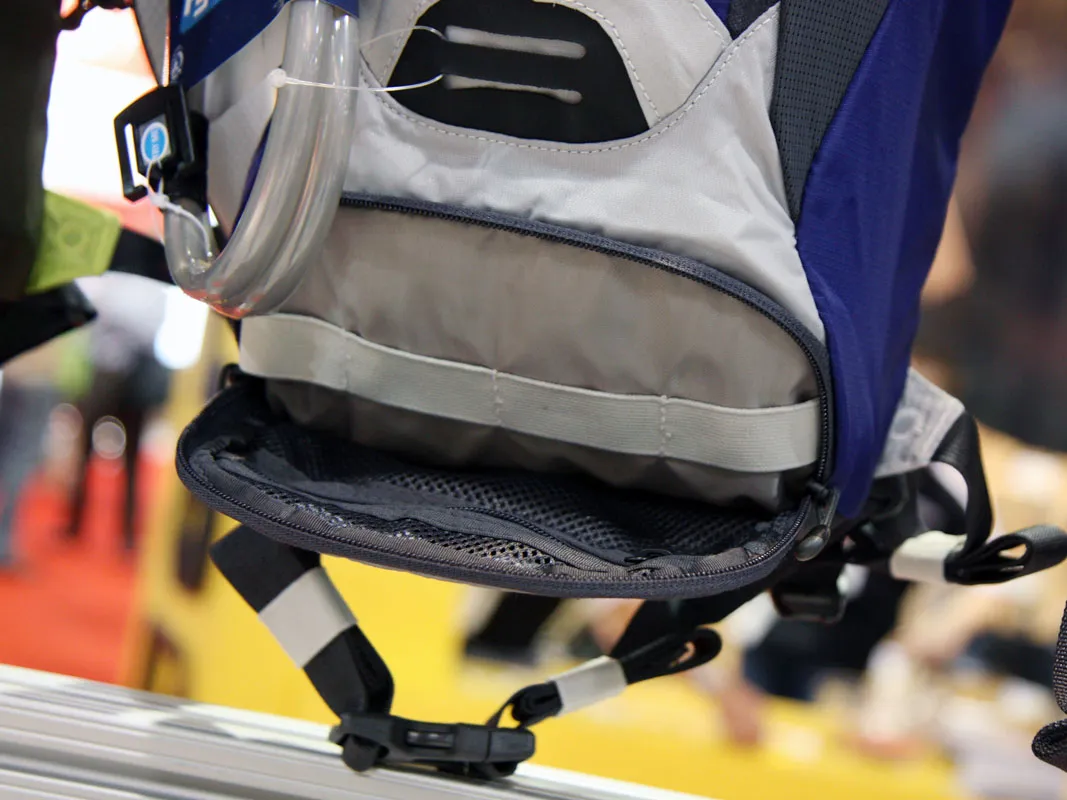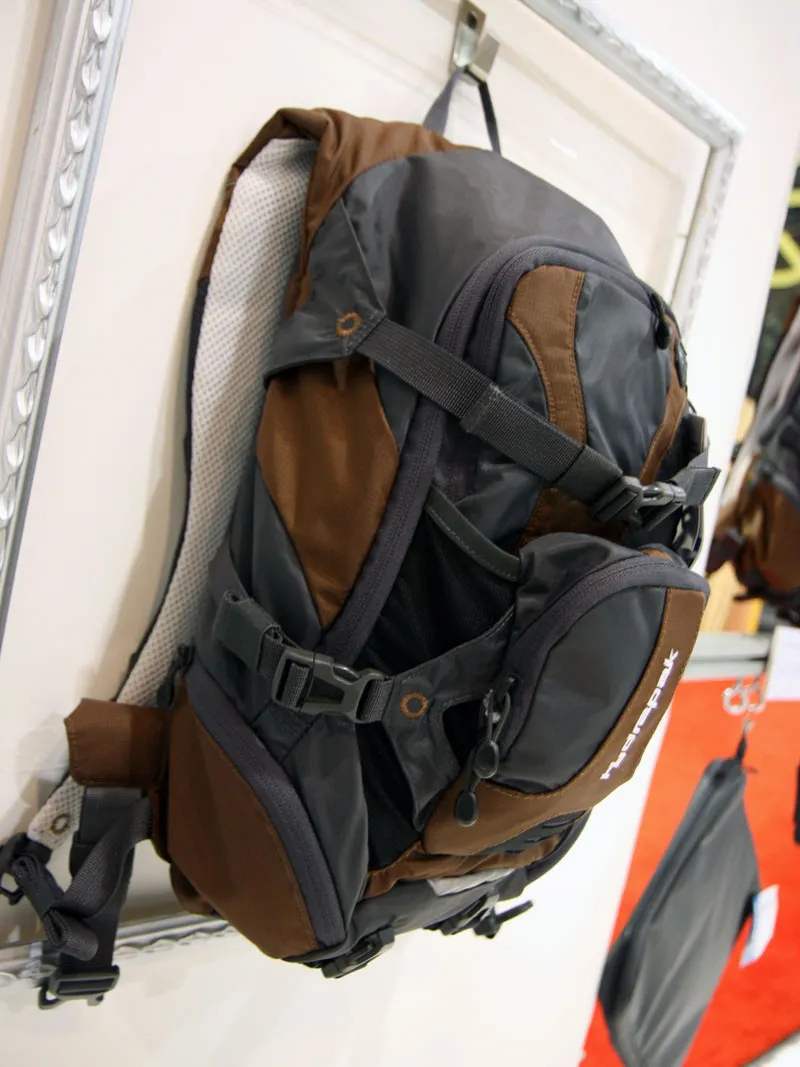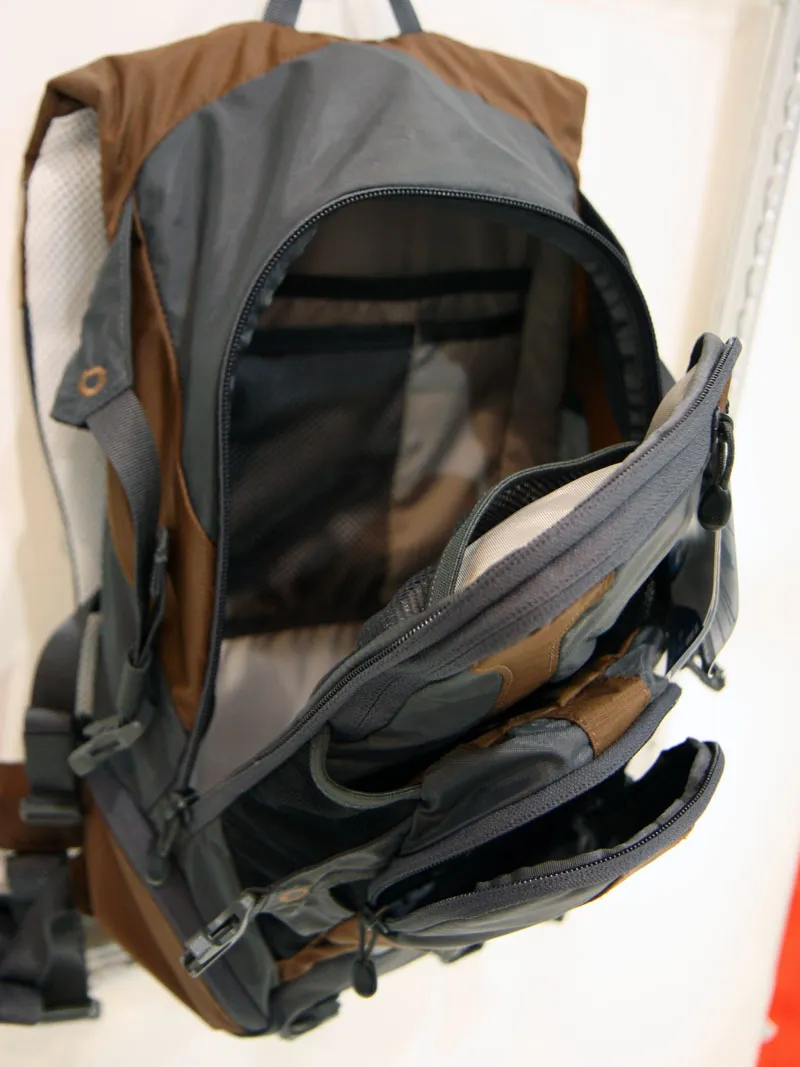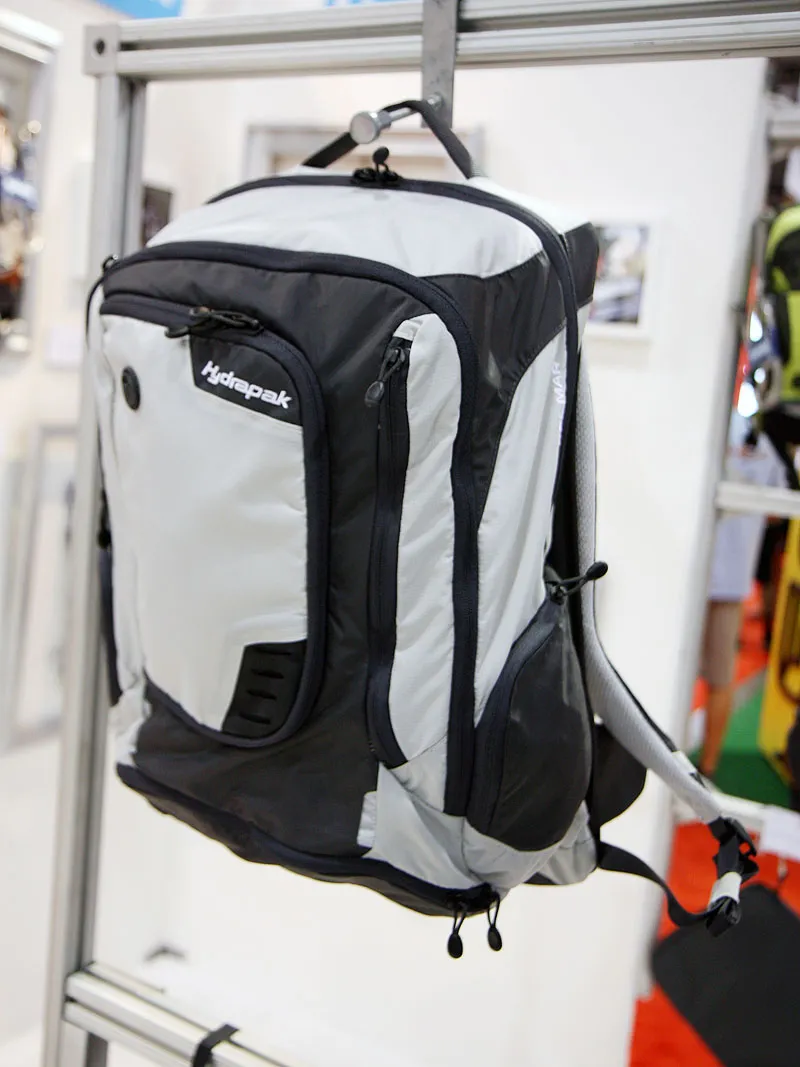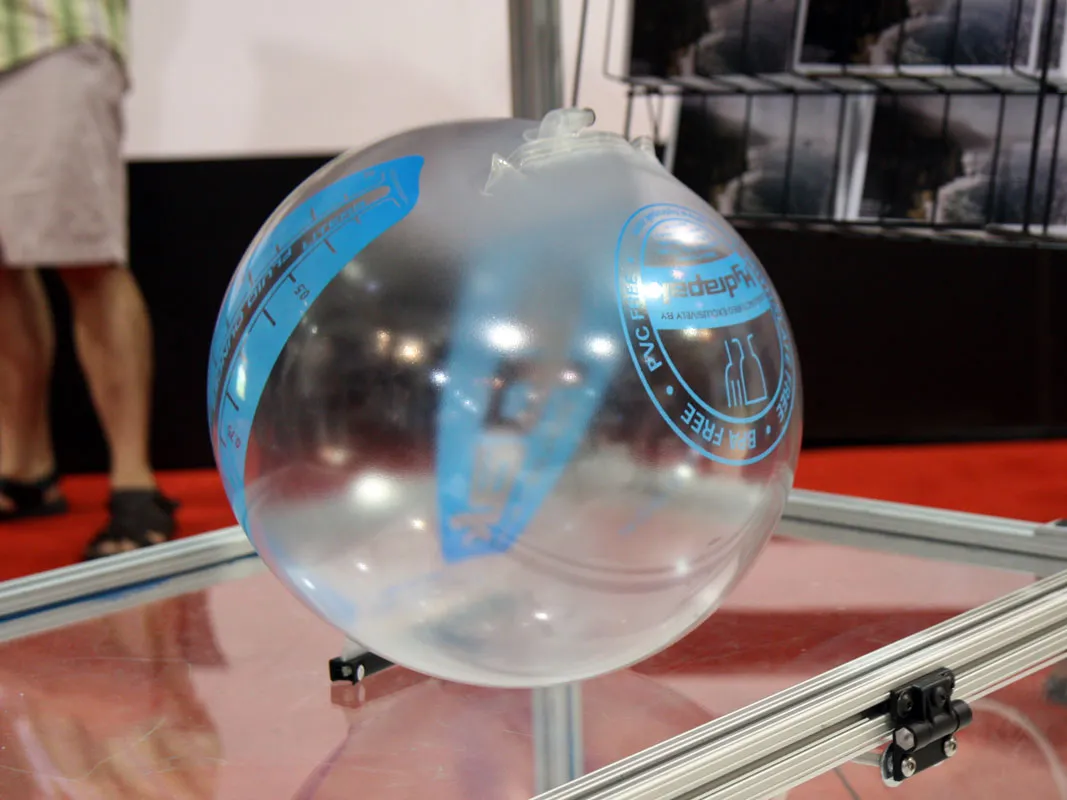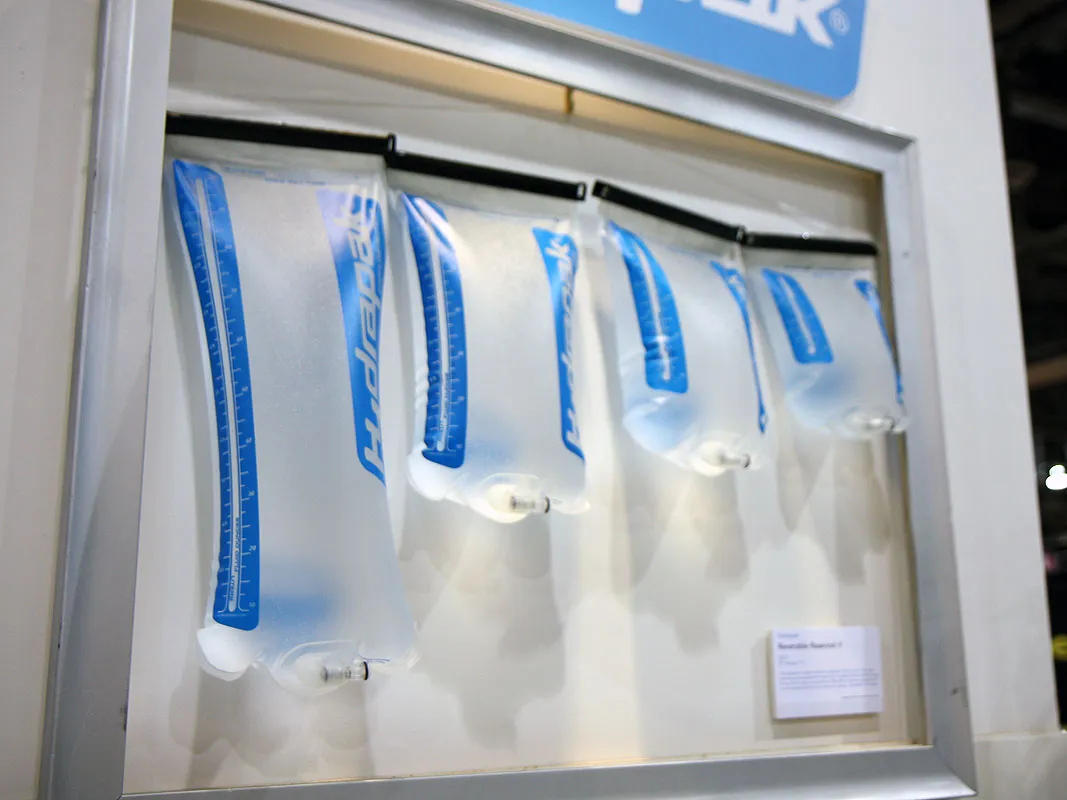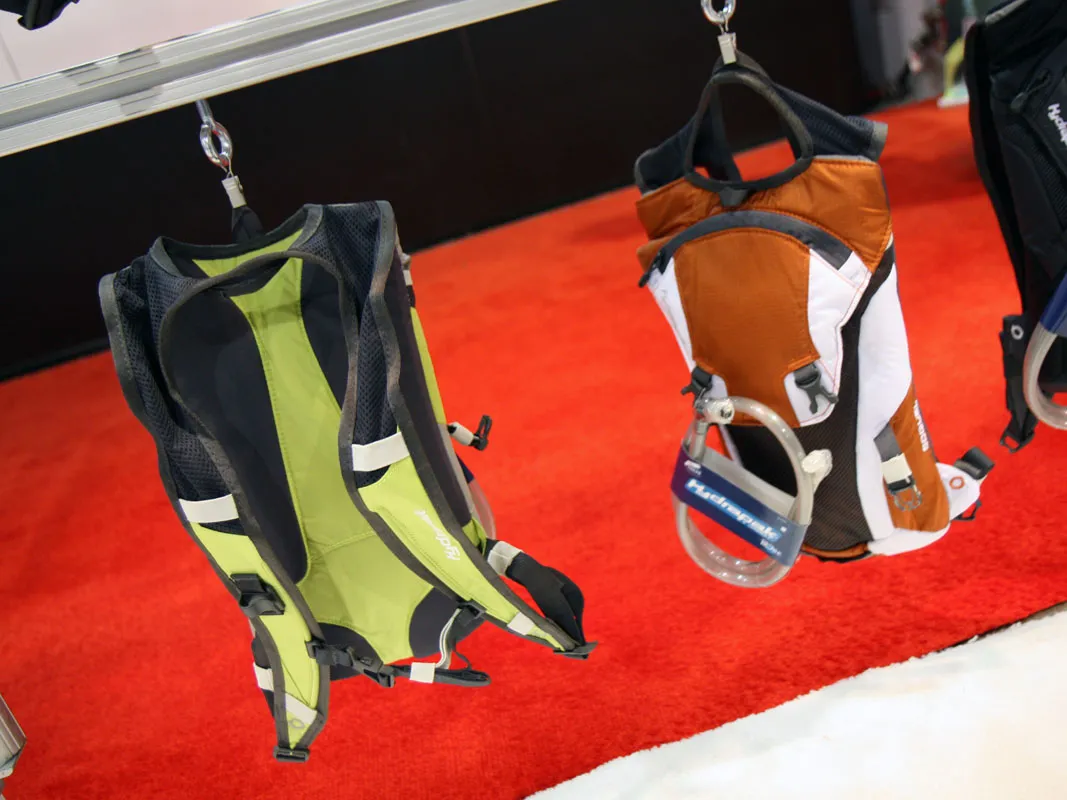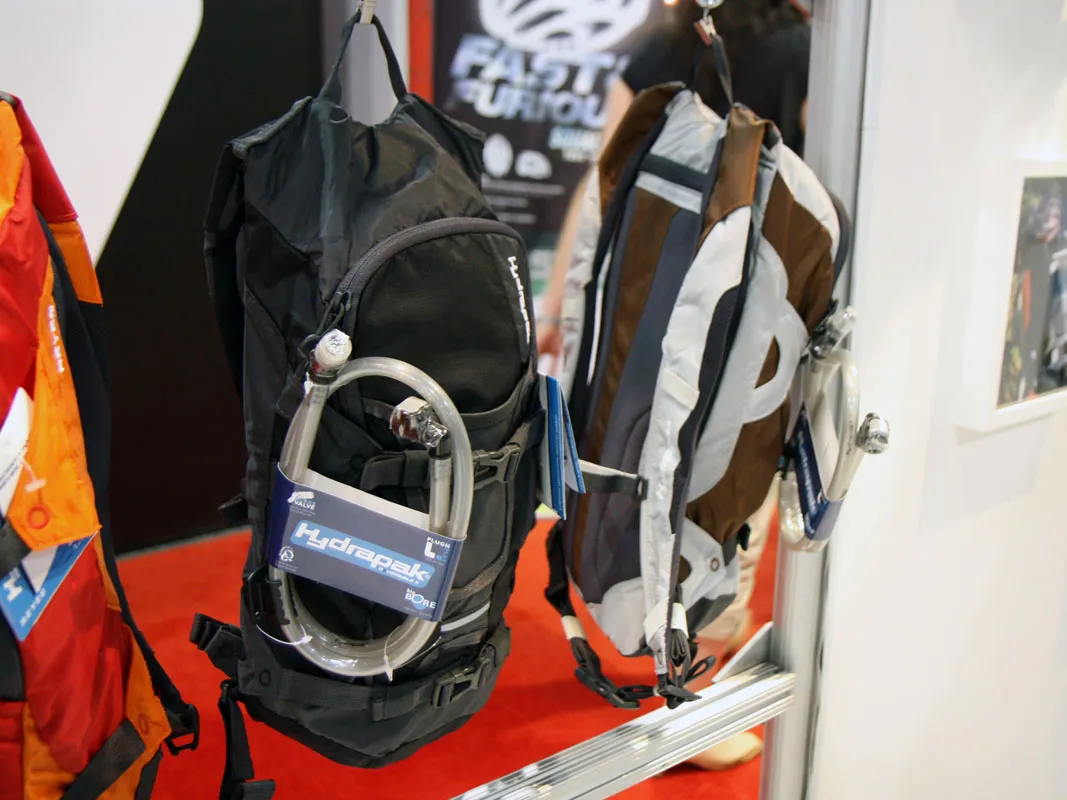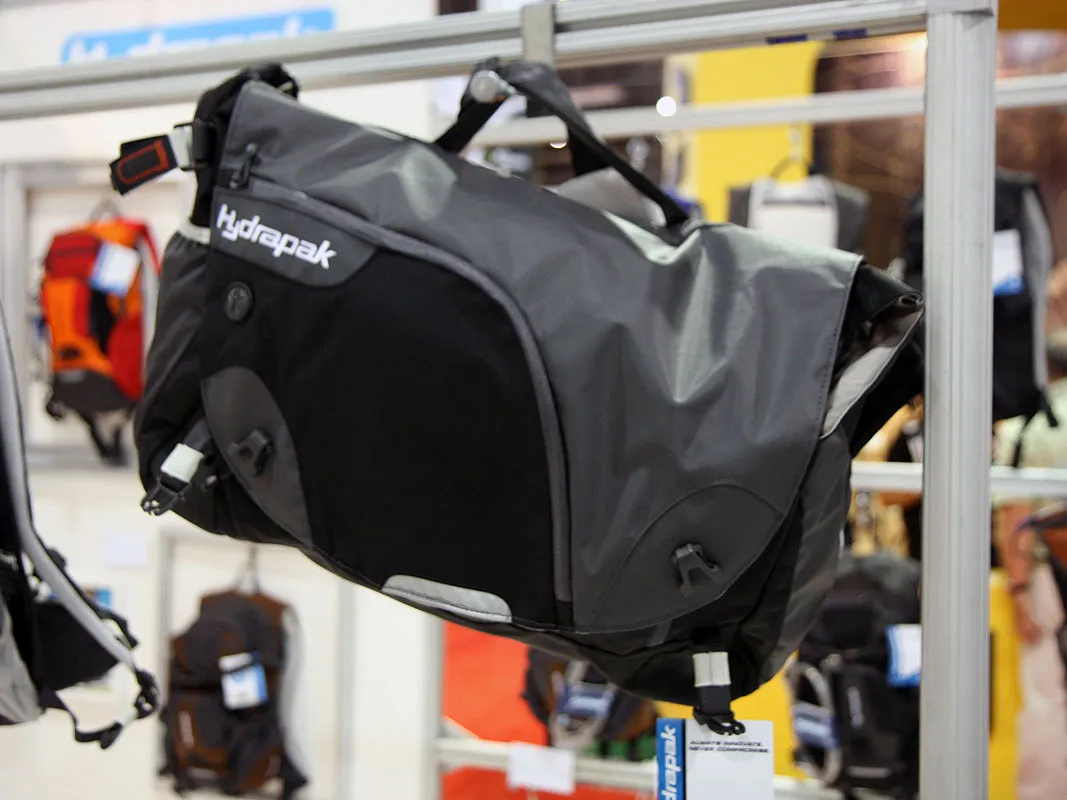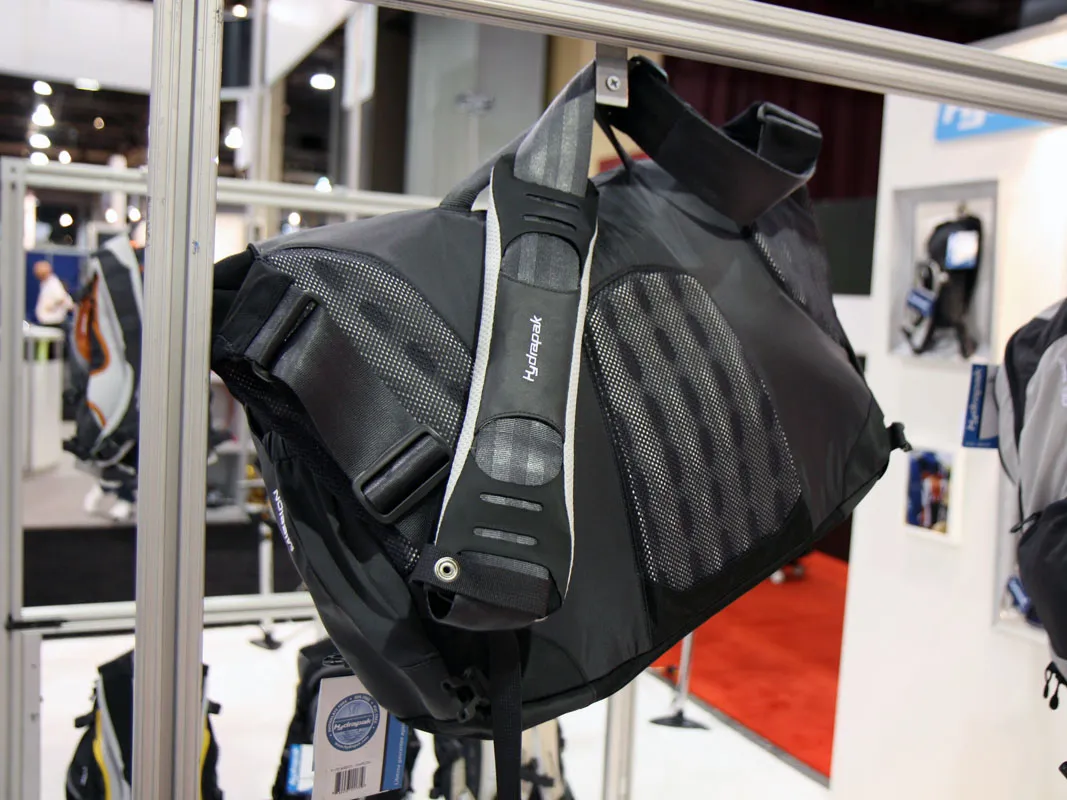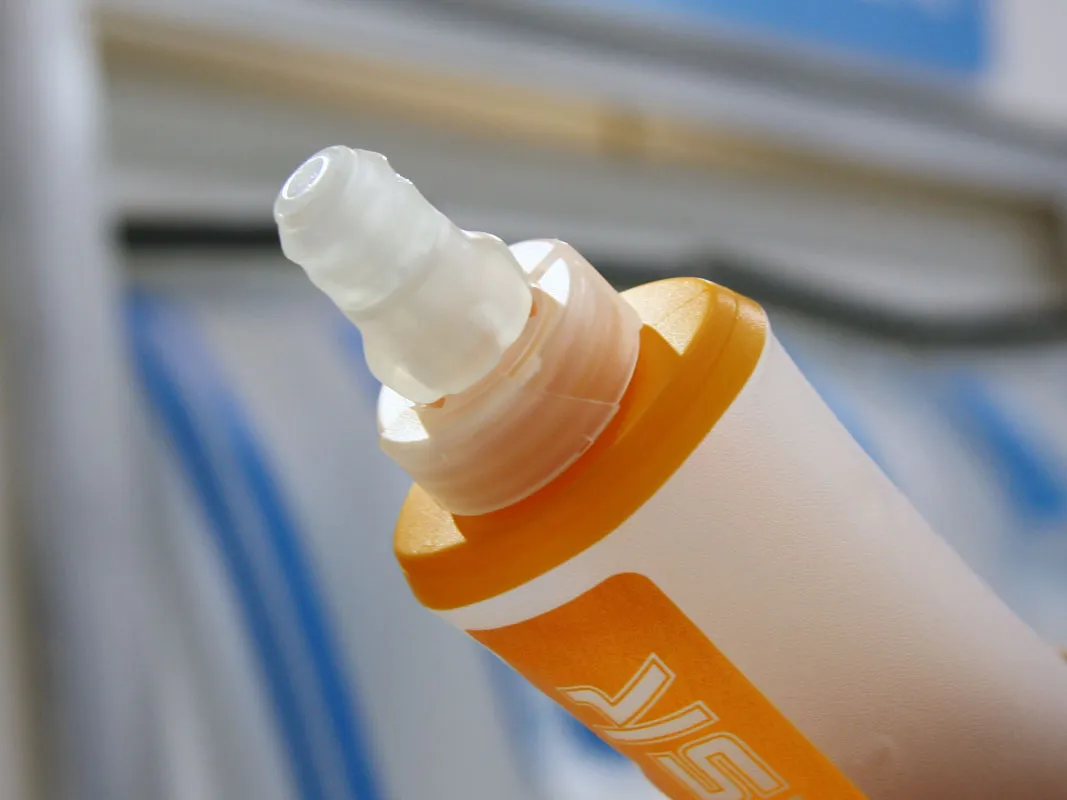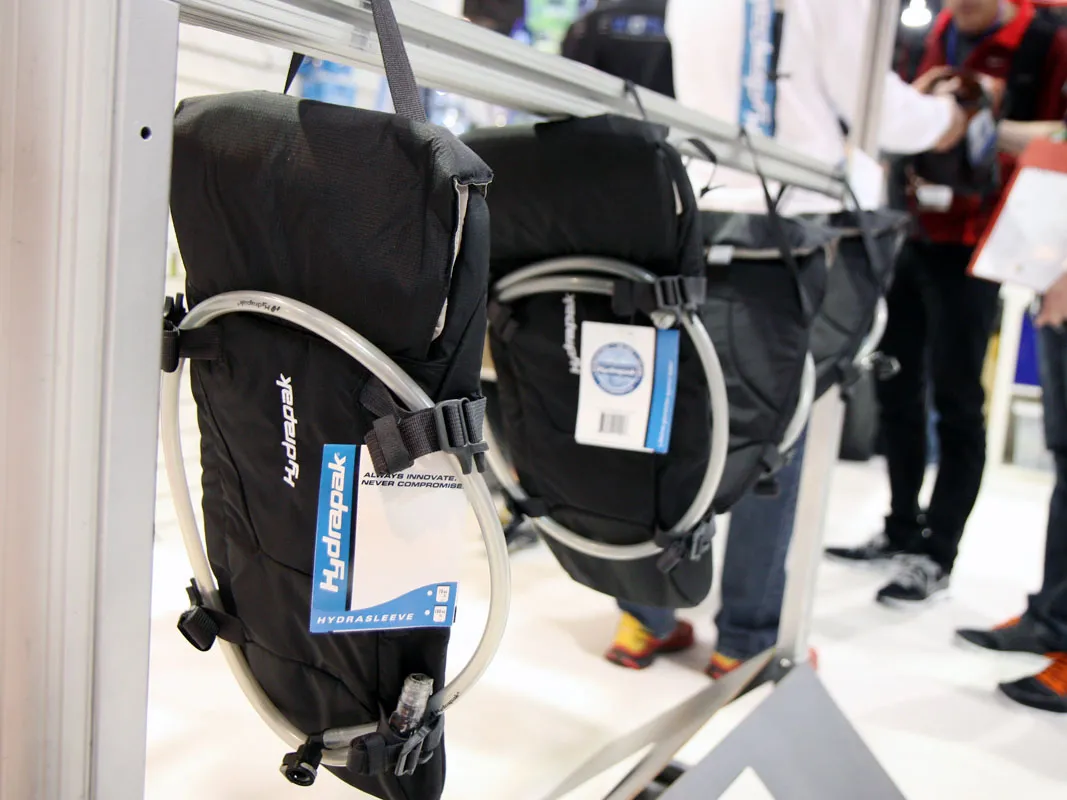CamelBak have redesigned nearly their entire bicycle hydration pack lineup for 2011, with some models getting updated styling while others get wholesale reworks – plus there are several all-new options, too.
Leading the way is the new Charge duo, featuring lightweight materials and more minimal unpadded mesh straps to cater to cross-country riders looking to shed every possible gram.
The top-end Charge 450 is the larger of the two with a 3L reservoir matched to 12.5L of cargo capacity – the same as the company's popular MULE but at two-thirds the mass, with a claimed empty weight of just 450g.
Pocket layout is very similar to the MULE, with a capacious main compartment, a protected media pouch up top and a flip-down outer area ideal for mini-pumps, tools and energy bars. Stretch pockets on the webbed waist belt provide quick access for other items, too.
Gone is the MULE's exaggerated padded back panel, though, in favour of a more minimal Lightweight Exoskeleton raised EVA pattern to help air pass through. Also, the MULE's foldout catchall that was just big enough for a helmet has been jettisoned as well.
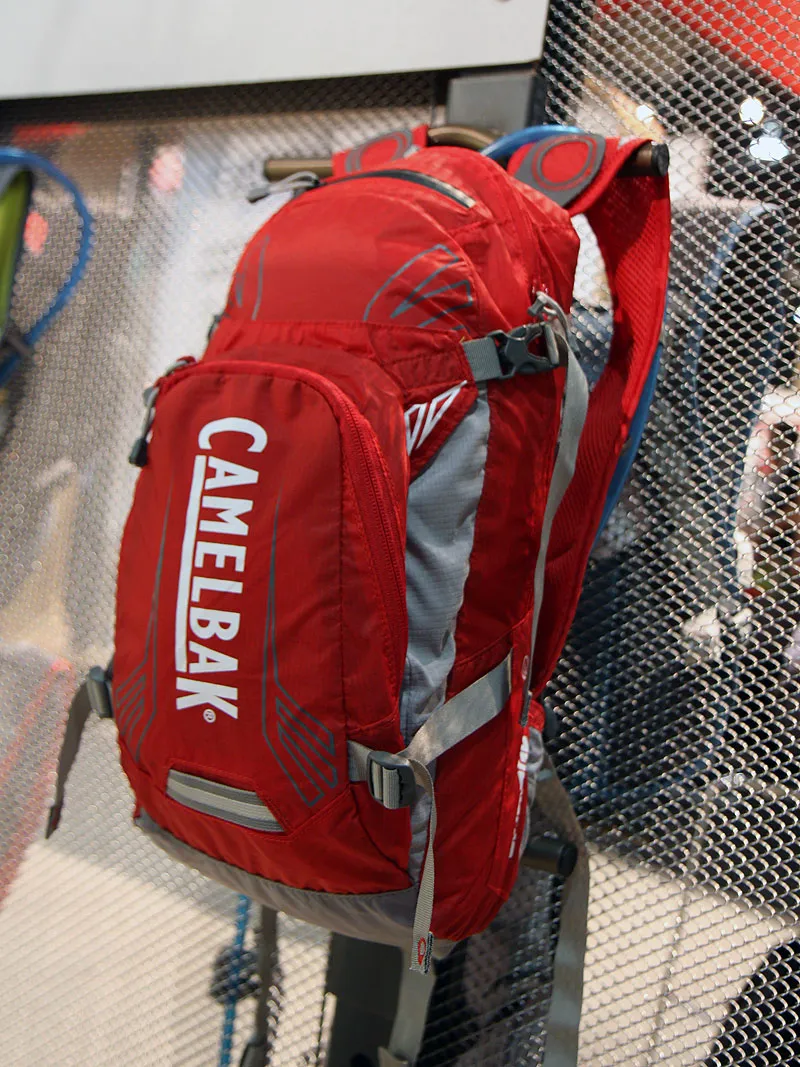
The new CamelBak Charge 450 has the same capacity as Camelbak's classic MULE but at just two-thirds of the weight
For shorter rides there's the smaller Charge 240 with a 2L reservoir and a far more streamlined 1.5L cargo capacity. Claimed weight is – you guessed it – just 240g without the included reservoir.
All-new for 2011 is the intriguing Octane LR, which relocates its 2L of fluid down around your waist. We tried it during the Outdoor Demo portion of Interbike and while the sensation is unusual at first, what we noticed later was the pack's unwavering stability even when applying a lot of body English.
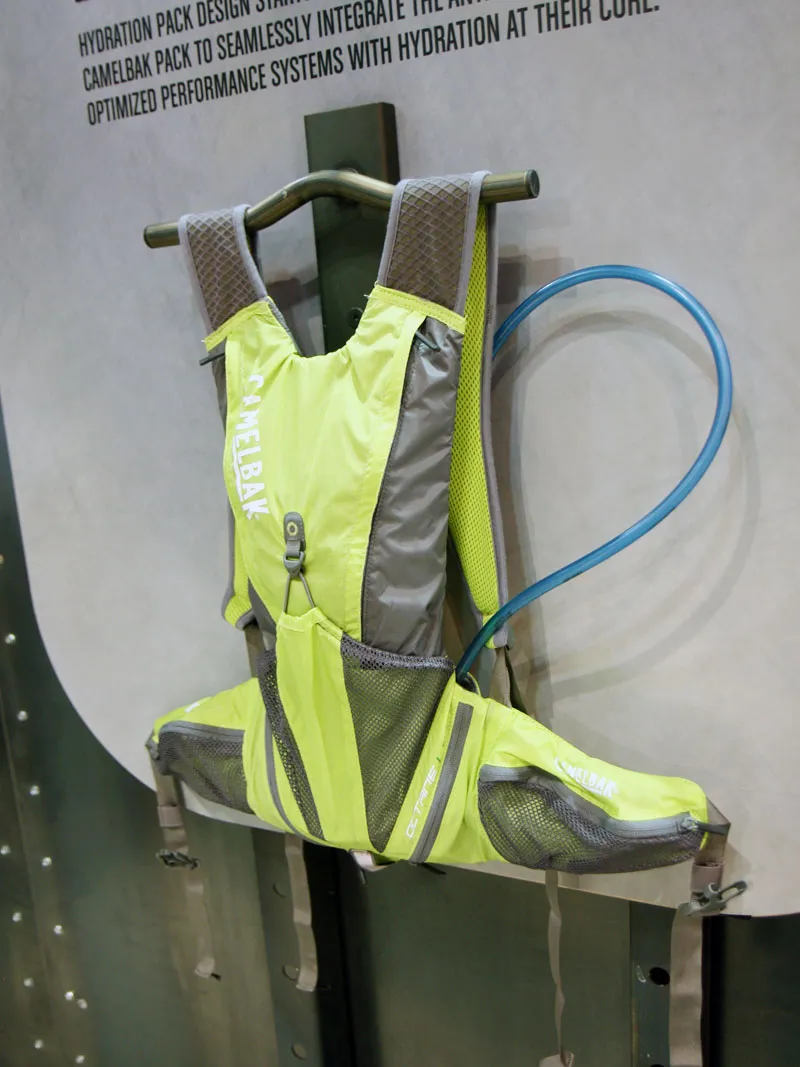
The CamelBak Octane LR places its 2L reservoir down around your hips, where the load is more stable and less likely to shift around during technical manoeuvres
Meanwhile, the iconic MULE is wholly overhauled with a cargo capacity bump to 12.5L and a slightly tapered shape. Riders looking for more airflow than the MULE's standard Air Director back panel can still opt for the MULE NV's more advanced NVIS articulated design and handy waist belt pockets. Cargo capacity on the NV has jumped to 8.52L and both packs include 3L reservoirs.
All-day jaunts requiring more gear are the revised HAWG NV's mission with a larger 19Lcapacity – up from 18L in 2010 – and newly tapered shape that sits more naturally on your torso and repositions more of the weight down low. Some of the added room comes courtesy of a pair of zippered side pods that are perfectly sized for energy bars.
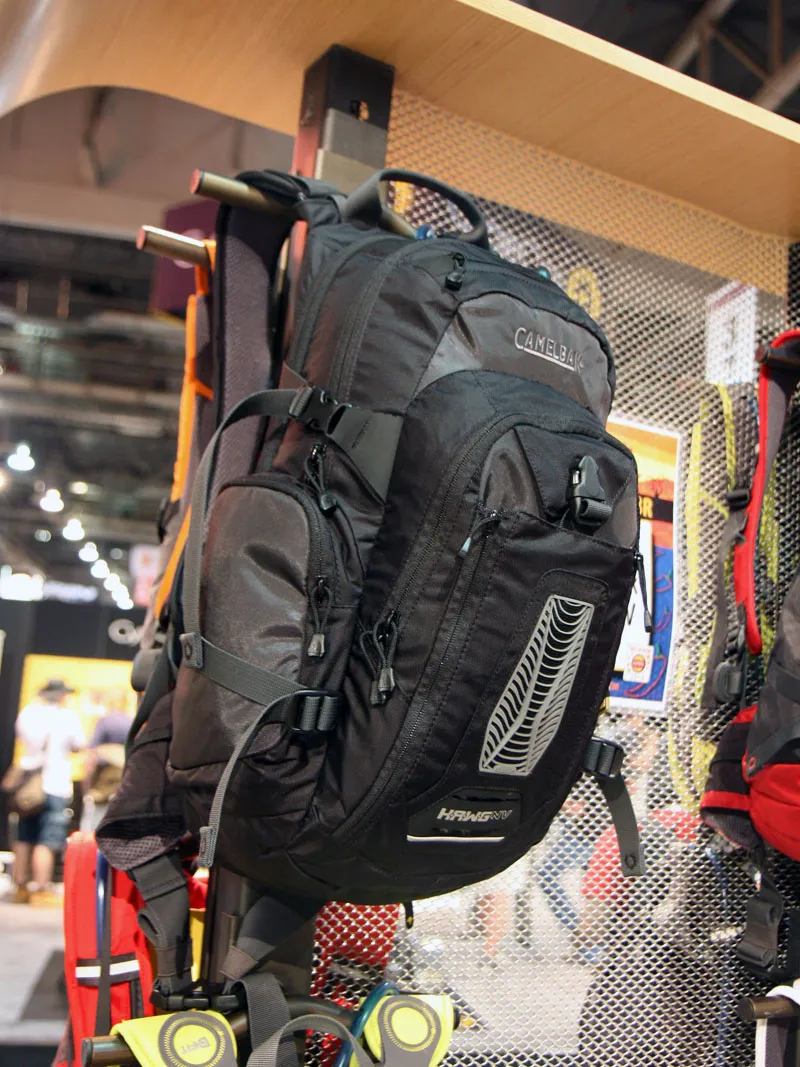
The workhorse CamelBak HAWG sports a more tapered shape for 2011 and a slightly reduced capacity
Hidden inside all of CamelBak's 2011 packs is the vastly improved Antidote reservoir, which includes a larger quarter-turn cap that's easier to operate and can't be overtightened, a baffled design that sits flatter when full, integrated flip-out arms that hold the bladder open for faster drying, and a quick-release hose connection that also allows for an inline water filter.
Hydrapak step up their game
Hydration pack rivals Hydrapak have long kept to the lightweight construction theme, with durable-yet-minimal ripstop nylon construction and intentionally basic back panel constructions over their entire range. As a result, Hydrapak packs tend to feel a bit more unstructured than CamelBaks but the upside is generally less mass to lug around and a more form-fitting feel on the bike.
Sitting at the top of the range is the Pro Series collection, with heavily padded and anatomically shaped shoulder straps, 3L reservoirs and a ventilated foam back panel to help even out heavy loads.
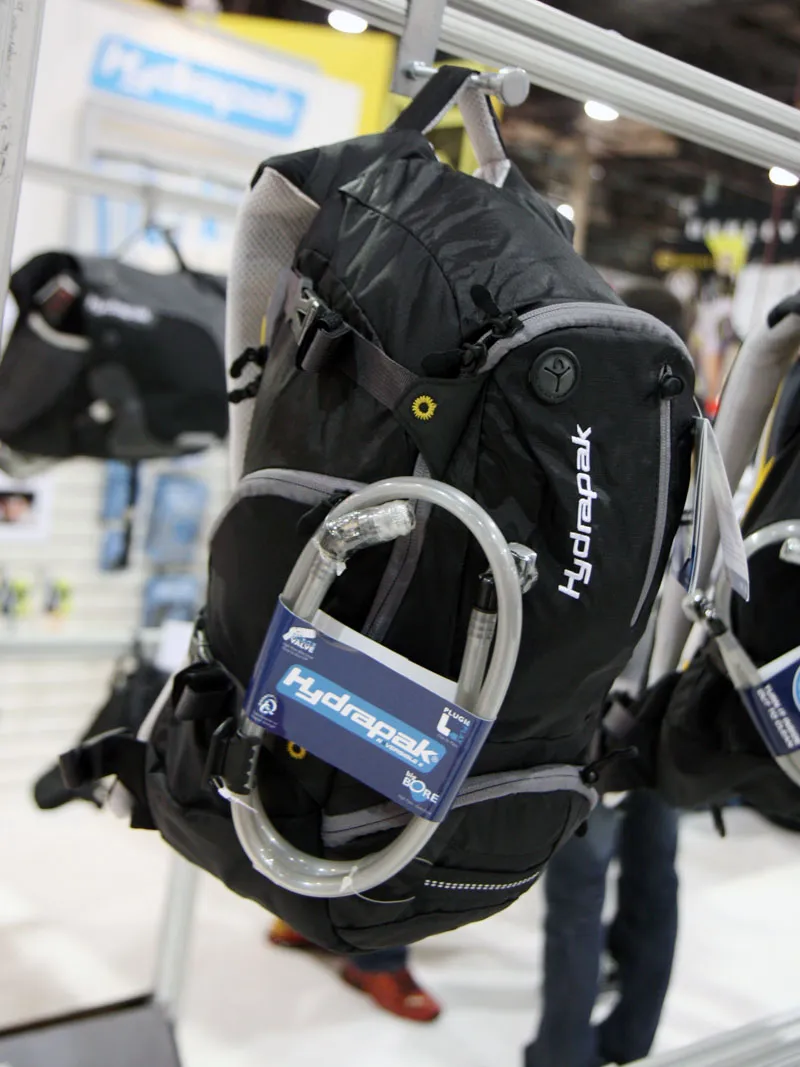
The Morro is Hydrapak's top-end do-all pack, built with lightweight ripstop nylon and offering up to 13.1L of storage in a multitude of compartments
The Morro is the smaller of the two options with 13.1L of gear storage spread across a large main compartment, a lower tool pouch, a media sleeve, and two zipped side areas big enough to hold water bottles. Four compression straps help keep everything cinched down. The larger Jolla boasts a similar overall layout to the Morro but moves the tool organiser inside and bumps up total storage capacity to a whopping 18L.
For shorter jaunts there's the race-oriented Avila, with just 2L of fluid capacity and just enough room for a windshell and some food, and the slightly larger Soquel with 4L of gear storage. Stepping up to the Reyes, Big Sur or Laguna models nets you another litre of fluid capacity and cargo capacities that stretch from 5.3L on the Reyes up to 9.8L on the Laguna, which also has five compression straps for attaching extra equipment.
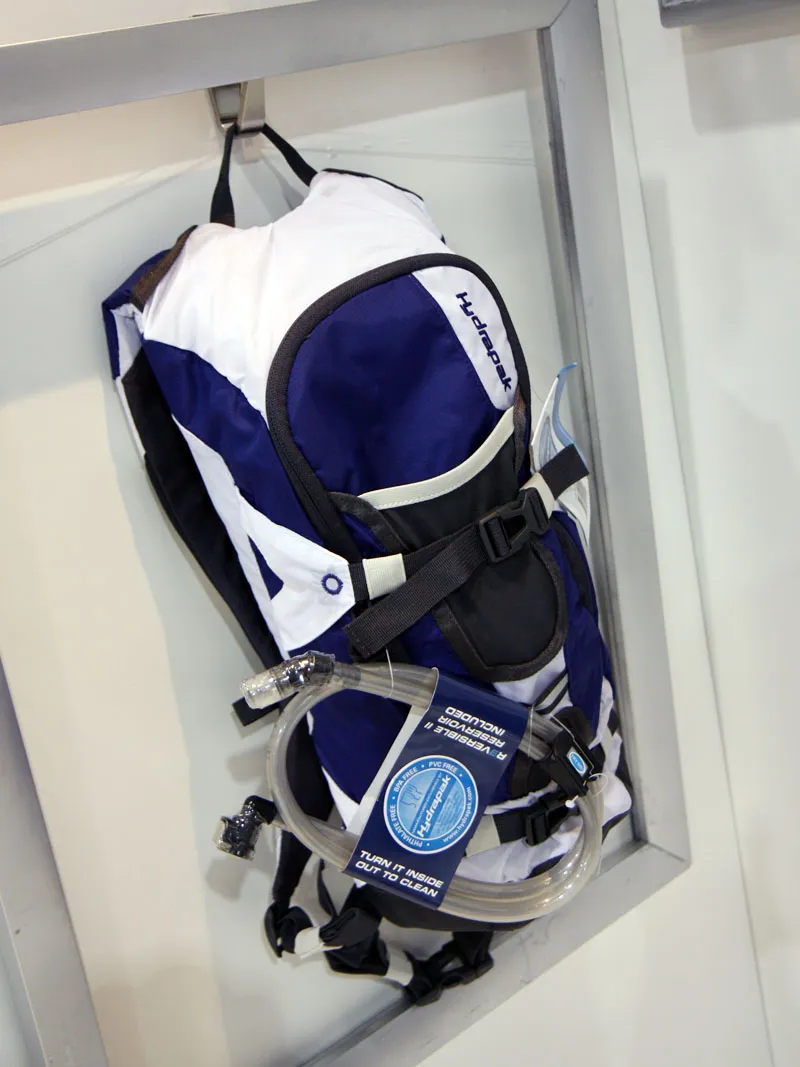
The Hydrapak Reyes can handle a modest 5.3L of gear but the external straps mean you can attach more if needed
One of Hydrapak's most interesting models for 2011 is barely even a pack at all, comprising little more than a barely-there ripstop nylon sleeve for the 1L reservoir, spindly mesh straps and six small pockets to hold energy food and maybe a multi-tool. There's no padding whatsoever and the reservoir compartment doesn't even zip shut.
The benefit of the E-Lite Vest is weight, or rather a lack thereof – claimed weight with the reservoir is just 280g (159g without), making it an enticing choice for mountain bike racers who need to carry a bit of extra fluid and nothing else.

Hydrapak's ultra-minimal E-Lite Vest carries just the bare essentials: 1L of fluid and a few strap-mounted pockets for energy gels and the like
While CamelBak still control the lion's share of the hydration pack market, Hydrapak's clever reservoir definitely makes their packs worth a closer look. The slide-lock top is exceptionally easy to operate and reversible for cleaning (and drying!), while the BPA-free material is remarkably strong and stretchy. Quick-disconnect hoses are included on upper-end models, too, while integrated magnetic clips help keep the lockable bite valve within easy reach.
